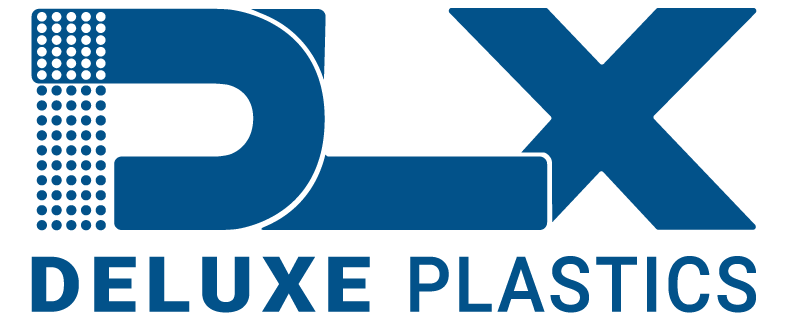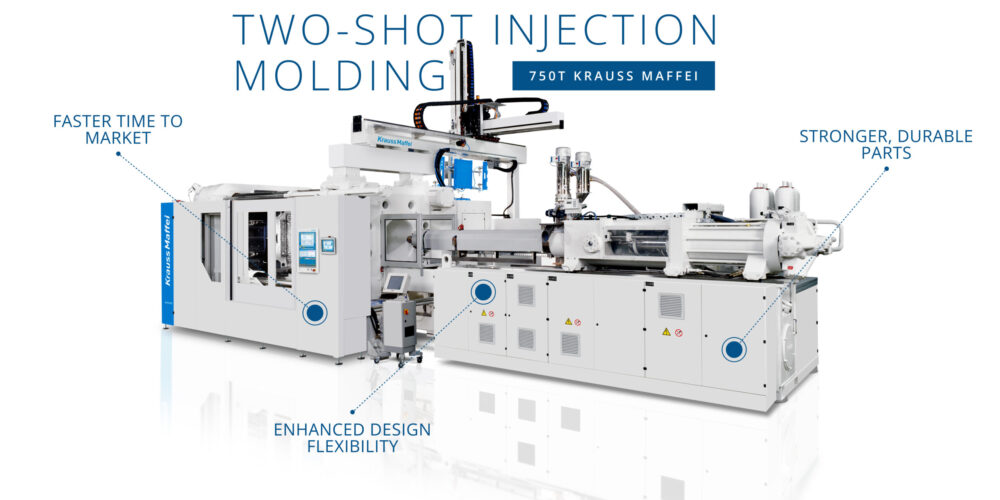A new wave of tariffs is reshaping how American manufacturers think…

How Do Insert Molding, Overmolding, and 2-Shot Molding Differ?
Since its inception almost 150 years ago, injection molding has made a substantial impact on society. It has come a long way since the Hyatt brothers patented the first rudimentary machine in 1872. Today, advances in injection molding have led to the process becoming faster, more efficient, and more accurate. Versatile options, such as overmolding, insert molding, and 2-shot have given designers greater flexibility with product design.
Insert molding, overmolding, and 2-shot rotational molding are similar as they all combine two substrates (sometimes colors of a substrate) to create a single injection molded part. The differences lie in the processes. Choosing one method over the other will depend on the estimated annual usage (EAU), design characteristics, and materials.
Insert Molding
Insert molding is similar to overmolding; however, it creates a part by molding a prefabricated substrate or inserts to it. The insert must be loaded into the mold by a person or robot, and then the plastic molding occurs. In many cases, the insert is a metal component, and the plastic component can be molded over, under, or to the side of it to create the finished part. This is most often done in a single-shot press.
There are many uses for insert molding. For example, it can encapsulate the female threaded insert into the plastic when something must be screwed into the plastic component. Other common inserts are electrical components, pins, and spring-loaded clips. The number of inserts and applications is expansive as long as the insert can withstand the high pressures and temperatures of the injection molding process.
Benefits of insert molding include:
• Improves component reliability
• Increases component strength and stability
• Reduces the need for secondary operations, reducing assembly and lead times
• Decreases product size and weight by using a plastic component
• Provides greater design flexibility
• Creates a water-tight seal between the insert and the over-molded resin
Overmolding and 2-Shot Rotational Molding
Overmolding, called 2-shot transfer molding, is a two-step injection molding process where two or more components are molded on top of one another to create the final product. To make the product, the injection molder molds the first part on one side of the tool, and the part is transferred to the other side of the tool to have the next part molded.
Similarly, 2-shot rotational molding is a two-step process where two components are molded on top of each other. The first shot is injected on one side of the mold, then the mold rotates and molds the second shot over the first shot in conjunction with molding another first shot. Because the whole process takes place in one mold, consistency and quality are improved. While rotational molding requires a more expensive mold than a 2-shot transfer mold, the cycle time is faster since the part isn’t moved between shots, creating a less expensive part to offset the additional cost. So, for higher EAUs, rotational 2-shot molding can bring about bigger cost savings.
The uses for overmolding and two-shot rotational molding are ideal for complex, multi-color or multi-material plastic products. Both offer the ability to use two colors, providing an opportunity for unique product branding. The processes can improve the ergonomics of tools and provide shock absorption, impact resistance, and a watertight seal for product housings.
The benefits of overmolding and 2-shot rotational molding are driving their growth:
• Assembly requirements are reduced by combining parts in a single process, significantly cutting costs.
• The need for joining after molding is eliminated, allowing for reduced lead times and labor requirements.
• Waste is minimized, and tolerance capabilities and repeatability are increased
• These processes can handle complex geometries, textures, and various colors and materials.
As a full-service, ISO 9001:2015 certified plastic injection molder, Deluxe Plastics can take your project from concept to a fully functional molded part. With our vast range of equipment, including 55 injection molding machines, three 2-shot machines, and automation robots, we are equipped to bring your plastic injection molded product ideas to fruition. We will work closely with you to ensure you receive the most cost-effective solution.
When you have a complex injection molded project requiring insert molding, over molding, or 2-shot rotational molding, contact us for a quote.



